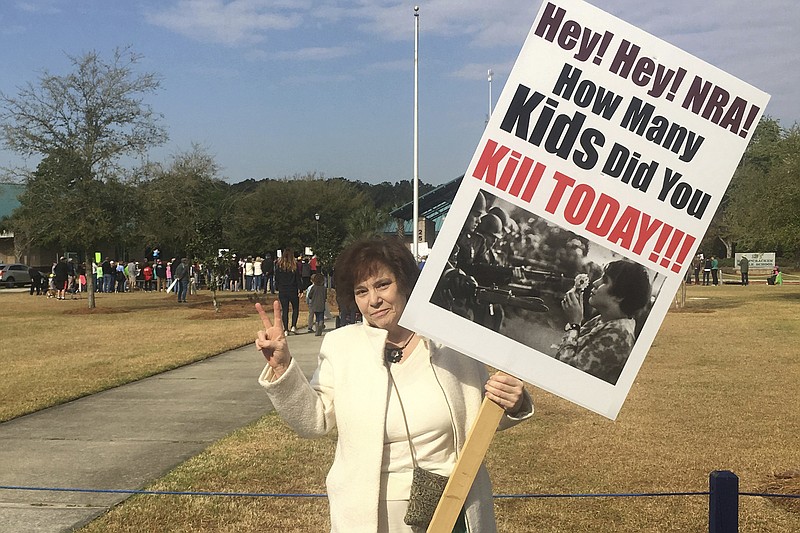She was the face of mass protest, but long ago lost her faith in protesting.
Then, last year, thousands of women set out to march on Washington, and Jan Rose Kasmir knew she had to join them.
"When Trump was elected president, I couldn't not participate. It seemed like the only way to get my voice out there," said Kasmir, 68, who was 17 when a photographer snapped a now-iconic image of her offering a chrysanthemum to National Guardsmen during a 1967 protest against the Vietnam War.
Kasmir gave up protesting when it failed to stop the Iraq War in 2003. However, after the 2017 Women's March, she rallied for gun control near her home in Hilton Head, South Carolina, joining millions of Americans demanding change.
"I think we've reached a tipping point," Kasmir said.
There's something happening here. What is it, exactly, and why now?
More than five decades after Americans poured into the streets to demand civil rights and the end to a deeply unpopular war, thousands are embracing a culture of resistance unlike anything since.
NFL players have taken a knee during the national anthem. Teachers have packed statehouses to demand raises. Activists proclaiming "#MeToo," have called out those who have abused them.
"We're in a moment where people are frustrated with institutional politics and where people see urgent issues that need addressing and for a moment they believe that taking action can make a difference," said David S. Meyer, a professor at the University of California, Irvine and author of "The Politics of Protest: Social Movements in America."
Opposition to Trump has clearly been a catalyst, he and others said.
For many activists on the left, "there's a great deal of fear that we may be living in the last days of this experiment in democratic self-rule, that Donald Trump's election may mark a fatal turning point," said Maurice Isserman, a professor of history at Hamilton College.
However, many protesters speak for causes beyond electoral politics, including concerns like shooting deaths or racial discrimination predating Trump's political rise. Much the same can be said of the turnout by white supremacists, likely reflecting views held before Trump's election.
Such protests "didn't spontaneously combust," said Todd Gitlin, who in the 1960s was president of the activist group Students for a Democratic Society and has studied protest movements as a professor at Columbia University. "There are deep cleavages that are in play and they will manifest themselves in a variety of ways."
Recent protests have drawn together broad coalitions. In Charlotte, North Carolina, Rachel Hewitt returned to protesting for the first time since the early 1980s, when she marched in support of the Equal Rights Amendment. The catalyst this time was Trump, whose election left Hewitt deeply depressed.
So Hewitt, who is 65, white and works as a freelance graphic artist, boarded a bus, alone, to join the Women's March. The shared sense of purpose she found was "life-altering," she said. When students from south Florida's Parkland High School organized the "March for Our Lives" last month in Washington, Hewitt chartered a bus.
"It's just thrilling to see that they very well could do what we weren't able to do," Hewitt said. She points to Amya Burse, 16, who organized a safety task force and a rally at her Charlotte high school after the Parkland killings.
Burse said she has been jarred to action by a lockdown last fall when a student brought a gun to school. But social media have alerted her to protests against other causes.
"When we started seeing one group getting enough success, we started realizing, well, maybe we can do something for myself," said Burse, who is black and a junior.
The dexterity, particularly of young people, in using video and social media to shape their message have enabled them to organize quickly and effectively, Meyer said.
The burst of activism has germinated for years, said Christopher Schmidt, a professor at Chicago-Kent College of Law who has written about 1960s activism. Occupy Wall Street protests in 2011 and the rise of Black Lives Matter two years later pointed to deep restlessness on the political left, raising awareness about issues that continue to resonate, he said.

